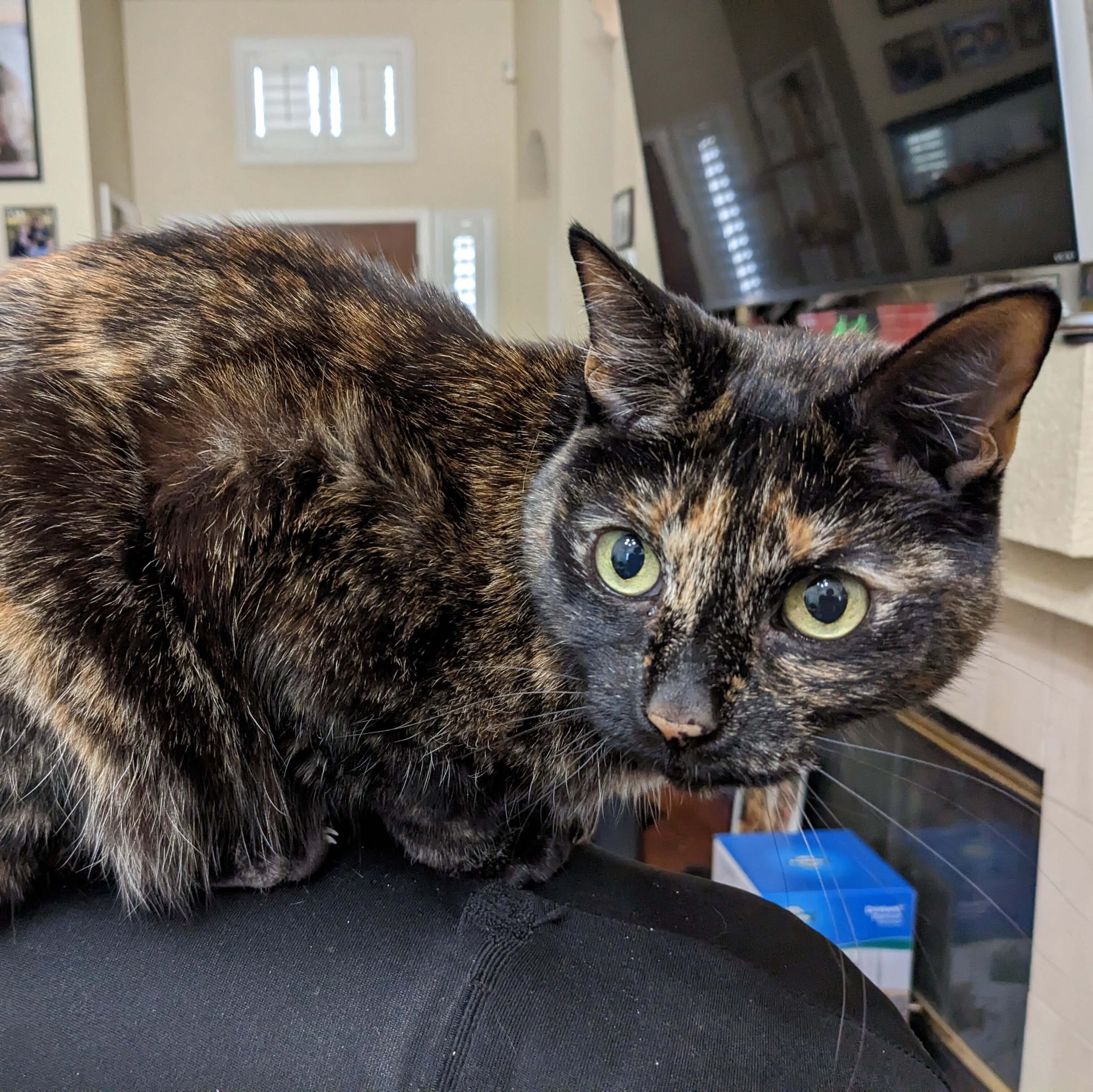This is major league bullshit tho.
On linux, where the config file for a specific program is, can vary annoyingly greatly depending on what distro you’re using and sometimes the same config file exists in several places and somehow certain parts of the configuration parameters get taken from several of those files, so if you think you’ve found what the actual config file should be and remove the duplicates, suddenly the program uses defaults or doesn’t even work at all.
Yup. Is it in /usr /var /etc or /opt? Maybe in some hidden home folder? Sure, you can Google it, but there’s no guarantee you’ll find the right answer.
There are only a handful of places Windows sticks stuff, and it’s pretty predictable.
You should never be expected to edit anything in /usr, /opt or /var. That’s highly unusual. For which software did you have to do this?
Brother scanner utilities:
/optPretty sure I had to change something in/usronce, but I forgot what. Now,/varwould be very unusual. But most of the time, all the configuration files happen to be somewhere in/etc.Docker on RHEL saves everything in /var/lib, for example. Tenable and Nessus stick it in /opt. I’m currently doing a rhel7->8 upgrade, and that shit gets stuck everywhere.
But, I also have issues on my Pis. For a lot of the packages I use, I’m lucky if they actually put their .service file in /etc/systemd. Having to run a find / command on a pi can take forever.
Generally /usr should be managed by the package manager, /etc is for global custom configs and the user home is user specific.
/var shouldn’t really be config, mostly logs or webservers for some reason.Disagree. Take game saves on windows. They can be in appdata\local, appdata\roaming, documents\company-name, documents\savedgames\company-name I’m sure there are more.
Nah. 3 places.
- Appdata subfolder
- Documents
- Game installation folder
Savegame folder is then placed either ina folder with game name or studio name, so easy to check all these locations within minutes.
Let’s not talk about rpgmaker games tho. I’ve seen them do some wacky shit with gamesaves.
Edit: To make my point clearer, I disagree with person above me about their disagreement. Savegames on windows are predictable as hell. Thanks to person below for pointing out I didn’t convey. :<
Yes but appdata subfolder is local, locallow or roaming so the poster above you is still correct.
Lol, appdata subfolder is already 3 different places 😂
What system wide software stores their configs in anything but /etc? Data, sure, but not configs.
Docker installs in /var/lib. Tenable and Nessus use /opt.
There are tons of packages that store config files in places other than /etc.
I don’t know what Tenable and Nessus are. I’m guess you have to install them from outside the package manager or build them from source, in which case, yeah, using /opt for config would be acceptable.
Docker’s config file is located at:
/etc/docker/daemon.jsonIt’s not in RHEL. Tenable and Nessus are vulnerability scanners, and Nessus at least can be installed via yum.
nginx at the very least, but there’s way more
Nginx’ default config location is
/etc/nginx/Yeah I missed the “anything but”, sorry
TLDR; Windows crap, I love Linux
Long read ahead, this resulted in a pretty big rant, but I feel better now:
Windows has way more silly places. From registry to ini files, assemblies, common files, services, drivers…it’s everywhere.
Do you know how an MSI packages for software installation work? Let me tell you, it’s a mess. An utter and complete garbage format. A database with hundreds of buggy functions, empty lines and internal inconsistencies. There wasn’t even a way to create them comfortably without paying for expensive software back then. Yea, im looking at you, flexera admin studio.
I automated hundreds of custom software installations on 2000 clients from windows 2000 to XP to Windows 7 to Windows 10… for >10 years, so I know what I’m talking about.
On Linux 99% of apps save global settings in /etc and usersettings in /home/user/.* or the newer way XDG_CONFIG_HOME.
But since all is a file on Linux every config can simply be copied to restore or backup settings. Almost every tool has man pages. How hard is it to run man tool and read the specifics if you need help? Windows? Sometimes you got some help files in a strange format (.hlp?). Other then that, start the browser and ask Google.
Linux package managing since 2003 has been better then it ever has been on Windows to this day.
One command to update all components? Packages will be installed and removed automatically to fulfill the dependencies of the software you want to install? Every package is build by a trusty maintainer of the OS instead of some overworked windows engineer that needs to create profit.
Do you know how Deb files work? They are simpel zips of the folder structure and files the software consists of. A textfile with metadata like maintainer, name, version and, very important: dependencies. Last but not least there are a two or three files that can contain scripts that need to be executed prior or past installation. That’s it. And you can do everything with it.
On Windows you often are forced to find the right combination of weird parameters to ensure a program starts. commandlines like “c:\windows\powershell.exe -e cmd /c program name”, happen way more often then you would expect.
On Linux I get: Global package manager and updates with trusted packages, no telemetry, more safety, no ads, better privacy…and many more.
My personal opinion: I don’t understand how people can even question the superiority of Linux for personal devices.
To add to this, Dotfiles is a very helpful Arch Wiki page.
XDG Base Directory & XDG User Directories will help you immensely. At least, for the programs that follow the XDG specs. Also, check out XDG Ninja.
Trust me, that is not Linux specific, Windows has that bullshit as well. Everything depends on how the devs wanted to solve the local settings problem, and if you have devs that work 1 or 2 years on the project and then quit, which in turn are replaced by other devs, you get this bullshit. The new ones usually don’t wanna touch the old one’s code, or if they do, they only make minor changes, just enough to make something that’s not working, work.
This is the “appdata” folder, this is where all the application’s data goes.
So whats the “Programs” folder then?
This is also where the application’s data and files go.
But I thought thats the “Programs x86” folder.
This is also where the application’s data and files go.
Ok whats “Program Files” then?
This is also where the application’s data and files go.
So my config file is in either one if those 4?
No thats in the “Documents” folder, obviously.Windows program data file structure has always been the wild west.
Don’t forget about the hidden ProgramData directory at the root of the file system. Ableton Live likes to install there for some ungodly reason.
Selects separate drive for install
Adobe: “Imma, pretend I didn’t see that”
Always remember,
C:\ProgramDatais the eqivalent of/etcin Linux. If they don’t know where to put/hide shit, but needs admin priviliges to edit and users can only read, you put it inC:\ProgramData.I think programdata is closer to /usr/lib or maybe /var/lib.
You almost never see config files in programdata.
Config files that are meant to be used as sane defaults for new user accounts, yes. Config files that are meant to be manually edited, no.
Besides, there are a lot of examples of configs that are saved in ProgramData, like, let’s say, registration info for proprietery programs (of course, this info needs to be shared amongst users, so your safest bet is ProgramData). Hidden by default, makes it perfect for storing everything the program is trying to hide from the user.
Don’t forget that there’s a hidden system junction at
C:\ProgramData\Application Datathat points toC:\ProgramData. Because everyone loves loops in their filesystem. Of courseC:\Users\All Usersis also a junction toC:\ProgramData. This kills updatedb in WSL.
Don’t forget
%USERPROFILE%/AppData/Local/Programs, where some programs get installed to because the developer doesn’t want to make it a system wide installation.Yeah, the Documents config file/dir pisses me off the most as well!
Game save data? No, my documents.
Application config files? Again, my documents.
Temporary documents I don’t care about keeping? Downloads, duh.
My actual documents? Desktop.
My desktop? Turned icons off because it was too messy.Just another day using Windows…
I have to say I love having no desktop. Something about watching my coworkers become dependent on it is neurotic.
Agreed. It’s much nicer to see your wallpaper than a mess of mismatched icons that may need to be occasionally clicked.
Same here. I don’t need icons, just press
Winand type in the program. I just gotta pray for Windows to not open Edge and search in Bing.If you’re using Windows, you can get a much better experience by ditching the Microsoft start menu entirely.
Everything Search to index files and Flow Launcher for searching files and applications. You can even make it open when you press the windows key.
Or if you still want a start menu, Start11 is worth paying for to get away from Microsoft’s ad-ridden crapware they call the start menu. It even supports using Everything for showing file results.
Flow Launcher seems pretty cool. I’ll try it out. Thanks!
System wide config for an application? Lets put that under C:\users*????
And Linux isn’t? There’s definitely not a central location either.
Agreed, but the number of places where to search for the config is not as big as in Windows. And there is the fact that most software is open source, so you could always check where the application saves it’s data.
Don’t forget that appdata nowadays has 3 sub folders, local, locallow, and roaming.
Also there’s C:\programdata
Also some programs just store it in the user folder, the documents folder, or games/ my games folder if they are a game.
It could also be stored in the registry.
Oooh the registry is even more fun.
- HKLM, HKCU? These are statements dreamt up by the utterly deranged
- Store it in software, make your own root folder
- Also for 32 bit programs there wow6432node
- There’s also the policies section, but this kind of makes sense to have it split off
- Also make sure to follow the apple methodology of having multiple different key names like Apple, Apple inc., etc
I still have no idea why HK is in front… why is the key hot 🤔… and what key are we talking about…
Oh, yeah, and the different key names… Windows, Windows NT (WITH a white space…), Win…
HKEY means “handle to registry key”… Not that that helps anything.
When code opens a file, device, etc, it’s given a “handle” to it, which is an internal reference so that Windows knows which file you’re reading or writing, and it keeps track of where you are in the document. Similarly, HKEY_CURRENT_USER is the handle that gives you the current user part of the registry.
I know that, the HOTKEY_* part of it was a mystery, why is the key hot… I mean, why does HK have to stand in front of it, it could be simple like just LM, CU, U (Users… still does nothing and nothing in it gets transfered as a setting in new user accounts), CR, etc.
It’s HKEY (handle to key), not HOTKEY. That’s what I was trying to say in my comment. There’s no “HOTKEY”.
Huh… I don’t know where I’ve read this a long time ago, but I could swear it was HOTKEY, not HKEY… your explanation does make sense though, while what I thought never did make sense.
And half the time you’ll find it in the registry too. Linux has proven quite well that an OS doesn’t need a registry.
Oh, and what’s with ProgramData and AppData being two completely different things. I understand the difference between the two directories, but there is no difference between a program and an app. Everywhere else it’s Machine/User.
Linux has proven quite well that an OS doesn’t need a registry.
Gnomes dconf would like to have a word with you. It’s really interesting how the Gnome people seem to get rid of every useful feature as it might confuse the user or be complex, but on the other hand add this registry-like anti-feature to make the system just as unmanageable as Windows.
What you can find in dconf is well organized compared to what is inside of the regedit hell.
Funny thing is, most 3rd-party utility tools don’t use registry but a config. Which makes them portable, btw.
Nowadays, yes. Go back 15+ years, the registry was used extesively.
My reasoning as to why, Linux was never a targeted platform for software back then, now it is. There was only GTK back then and it didn’t look “nice” (appealing) at all. Plus GTK apps were huge for Windows, since you’d have to also install the GTK runtimes and all that… that just took a lot of disk space, which was expensive back then. Compared to an app that does the same, but spends only 10% of the disk space needed for GTK (you could even go a lot lower with compressors), it’s obvious why GTK was never a viable option when making a GUI app.
And since Linux doesn’t have a registry (or even if it did, it’ll probably be completely optional to have it or not, so you can’t rely on users having it installed), you’d have to just save the settings in a file, just like the rest of the FOSS applications. So, it makes no sense to have completely different codebases for the same app for Windows and everything else. In fact, most apps nowadays that aim to be cross platform just use Qt. You can compile it for watever you like, there is no need to keep separate codebases.
there is no difference between a program and an app
Yeah the naming is confusing. The reason is what you said - machine vs app.
Back on Windows 9x, some apps would store files directly in the
C:\Program Filesdirectory. This was ‘fine’ at the time since every app ran with full permissions. Users were atC:\Windows\Users, but users were optional so not every install used it.Windows XP had a better NT-based permission model (not nearly as improved as Vista, but better than 9x) and allowing regular users to write to the Program Files and Windows folders wasn’t really a good idea. It added two directories for settings:
C:\Documents and Settings\username\Application Datafor user-specific dataC:\Documents and Settings\All Users\Application Datafor non-user-specific data
Vista kept the former but moved the latter to
C:\ProgramData. I can’t remember why.Windows 7 moved the user stuff to
C:\Users.ProgramData is for admin stuff and things that need to be shared between users. AppData is for personalized settings per user. For example, AnyDesk stores the unattended access password in ProgramData, as well as the ID. Sure they do get copied to AppData when AnyDesk runs on boot/login on any user, but you could also have some user specific options (like language) and they get stored in a separate file in AppData.
What the fuck is local low? I don’t understand. Local is Billy G’s jizz… I get that… And Roaming is for poor plebs. But why LocalLow? Is it like cache? But I have seens games saving their save files there. I don’t understand
The folders actually do make sense.
Roaming: this data can be moved between machines in a domain if you have a roaming profile. E.g. go to another workstation and your browser configuration is the same? Means it’s in Roaming.
Local: this data will not be synchronized between machines when you roam. This could be your browser’s cache.
LocalLow: like local, but for applications that are “low integrity”, like Internet Explorer. These folders have special properties. https://helgeklein.com/blog/internet-explorer-in-protected-mode-how-the-low-integrity-environment-gets-created/
Local is for regular apps, LocalLow is for depressed apps and Roaming is for high apps looking for munchies.
This is by far the best explanation
This is probably what MS thought when naming them… seriously, only Local makes some sense.
You can rename them in the environment variables UI. Has anyone tried this, any software who has the path hardcoded?
Btw, here’s the paths.
Has anyone tried this, any software who has the path hardcoded?
I know for certain that some Adobe products did have these paths hardocded (past tense, haven’t tried this now), because I moved my home/user directory on D:, yet they persisted to save the settings in
C:\Users.
This isn’t really accurate for either side. For Linux, I’ve had crap shove configs in ~, /etc, /var, at least.
On Windows, it could be literally anywhere or in the registry.
That’s one thing I especially like about Flatpaks on the Linux side. Everything’s in ~/.var.
Which unfortunately also don’t follow xdg-dir specification…
Or
~/.local/share/${software_name_or_whatever}… Or~/.${software_name_or_whatever}/Oof
i love apps which don’t follow the XDG Base Directory spec 🥰🥰
Which one is your favorate, mine is
~/freedroid/.😝If you have flatpak, and the application don’t need full user home access, then you can move the folder to application sandbox by setting a persistent path.
Or
~/.config/software_name.Being the ‘correct one’ makes it easy to skip over… thx
The idea of the registry is so freaking nice. Imagine if all the configs of a system could be changed through a centralized and consistent API.
I feel mildly aroused when I see a program or a game that collects everything in it’s folder and can be used from a USB drive. Some paid, industrial grade software leaves so much traces and depends on so much different hidden files and keys it’s making me sick.
Any game can be used from a USB drive if that USB drive is running a live OS.
Or if you just symlink /usr, /opt, and /home to that usb drive. You may be asking why you wouldn’t just mount partitions on the usb drive to those locations. This is not a question I will be answering
That’s deep 🤔
You can make a Confucius meme quote out of it.
That is good… unless you plan on sharing the app between users, then it sucks, because every user has to be an admin in order to change the config… and then, you have one user that sets it like so and so, and another that sets it completely different. And this is why separate settings for users is a good thing. Sure, have an option for a global config, and let that copy be copied to the local config as sane defaults, but not having the option to actually have separate configs in user directories is, from an IT perspective, insane.
Or in /home/username/.applicationname/ if they want to be annoying.
This should be considered a war crime, and doubly so when they don’t even have the decency to prefix it with a dot (looking at you Golang). It’s my home folder, not a dumping grounds for random trash.
and snap
fuck snap
What does snap do to your home directory? I haven’t touched Ubuntu in a very long time
~/snapNotice the lack of period. Users can’t change it.
Or in /etc/<application>, or in /var/<application> I’ve seen all of that, sometimes differing between distributions for maximum annoyance. So I don’t think we get to act smug in I’m this particular case.
The setting you’re looking for could be in
appdata%It could be inlocalappdata%It could be inC:\ProgramData. It could be in the registry. It could be in HKLM. It could be in HKCU. It could be in any of the userdirs. It could be in the application’s directory.HA! Joke’s on you, it was an envvar all along!
True story.
This is the real answer.
Oh that setting is super easy to change, just go to run, type in regedit, expand HKEY_LOCAL_MACHINE then just scroll until you find CLSID-73838-abf83-c758d57-87a90ba, set the value to zero and reboot!
Probably just log in an out, but still, I fail to see how this is easier than changing
some_bool_settingfrom=trueto=falseis harder… maybe because you actually know what you’re changing, so that makes it scarier 🤔.
Mozilla products:
“What is this .config folder you talk about?”
not seen in this comic: the linux file isn’t where the comic/manual/internet nerds says it should be, and there’s no realistic way to find it
Sure there is:
find / -name myprogram*.md -o -name myprogram*.txtor start with just looking for the program name and pipe tolessSo simple
The prompt was realistic not simple lol. Usually some
manorprogramname -hand then reading will tell you where to look and that’s simple. Not many people want to hear “RTFM” though.
Until flatpak came along and just keeps everything in their respective app sandbox.
If your app don’t need full user home access (most app don’t), you can use a persistent folder to place the folder in app sandbox instead of home.
It is not only more clean, but also more secure and private.
Nonsense. And even if the config file cannot be found in the usual directories then there are always tools like KFind that can search your entire OS within seconds.
congratulations. you’ve just sent a linux newb down a 12 hour rabbit hole that doesn’t actually solve their problem.
and thats the power of linux baby hell yeah
How does it not solve their problem if they’re searching for configuration files? That would only be the case if the files do not exist in the first place, and then there’s really no difference between GNU/Linux and Windows at all if you assume that initial configuration has not occurred. What would you do?
Despite what developers do at the end of the day, there are conventions for application directories on every OS.
I just use the
directoriescrate in Rust.🦀
Yeah… It’s an awesome crate. I use it for my app too.
windows is simple, all configs are keys accesible via reddit
[Deleted]
half the time its been deleted because Spez is a greedy pigboy
Via Reddit How?
Sorry, that was my lame joke about the simlar sound of the windows essential tool “regedit”.
My only surviving knowledge from when I used to be able to do things on windows was that it was always a bucket of shite until you “regedit” a bunch of things. These edits were arcane secrets known only to mystical internet guru’s like some bloke called “Fred Vorck” and impossible to figure out by logic, reason or even through mundane hard work. I assumed that’s what the lower panel in the OP is getting at.
But on reflection, I’d be sad if there’s not a forum on reddit called “regedit” will all the advice on what registry keys to fix - so unintentionally it might not be the worst advice - apart from the word “simple”.
edit: reddit isshit
https://www.reddit.com/r/regedit/I’d forgotten about “dog destroyer for windows XP”
That’s how bad it used to be.
https://web.archive.org/web/20120722030506/http://www.vorck.com/windows/index.html
Some people have diacritics and spaces in their usernames, which wreaks havoc for badly written programs accessing AppData or folders in the user’s “home” directory, such as Documents. And there are lots of such programs.
When setting up Windows, use a short and memorable, DOS-compatible username, and then change it later (the home folder will still have the old name). You can then move indiidual Libraries (Documents, Downloads, Music, Pictures and Videos) to the root of D:\ too.
programs writing shit in the document folder are so freaking annoying. I typically backup my document folder, as they contains most of my user files.
And some stupid program just decide to litter it with their temporary file, and game saves…
It is okay if they only do what you asked for.
“Okay, Audacity, save to ‘C:\Users\me\Documents\recording.aup’”
*folder 'C:\Users\me\Documents\recording_data' shows up*
Oh no, I think AoE (some version) will sometimes save game file to Documents, and IIRC, wechat will save temp file to documents without user interaction
%appdata%
Takes you to the roaming subfolder though
Which contains 90% of what you search. Then just press backspace, and you reach the appdata folder.
Most configs should be in the roaming directory, since you’d usually expect them to roam between computers on a domain. The local directory is only for stuff that doesn’t make sense to sync to other computers - things like caches, configs specific to that individual PC, etc.
Not that it matters for home users, as home users generally aren’t using Active Directory with roaming profiles.
Tell that to the developers. At this point I’m sure they are just rolling a dice to decide where they should put things.
%localappdata%
They don’t have config files in Windows. Apps just throw things everywhere without rhyme of reason


























